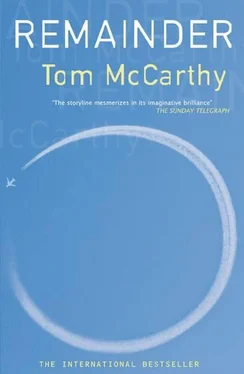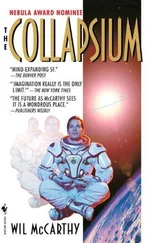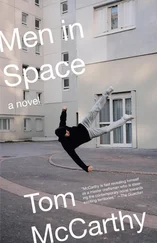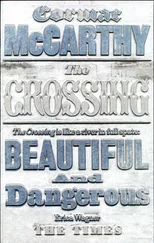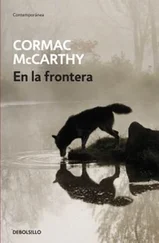How to do this? I’d need to see the block, of course, the slab, London. I had a grotty, dog-eared A-Z but couldn’t get any sense of the whole town from that. I’d need a proper map, a large one. I was about to go and buy one in the nearest newsagent when it struck me that I wasn’t thinking big enough. To do this properly I’d need coordination, back-up. I phoned Naz back.
“I’d like to hire a room,” I told him.
“What kind of room?” he asked.
“A space. An office.”
“Right,” said Naz.
“I’d like to organize the search from there,” I continued. “With maps on the walls, things like that. A kind of military operations room.”
“You’d like to organize the search yourself?” he asked. “I thought I was to…”
“I’d like to take charge, but I’d like you to work with me.”
There was a pause, then Naz said:
“Fine. An office, then.”
“Yes,” I said.
“Any other specifications?”
“No,” I answered. “Just a normal office with a couple of desks in it. Light, windows. Just usual.”
An hour later he’d got me an office in Covent Garden. It had a fax machine, two phone lines, a laptop, marker pens, white sheets of A1, two giant maps of London, some pins to stick one of the maps to the wall and some more pins to stick into it to mark locations. Naz had bought pins of several different colours and some thread to wrap round these, like cheese wire, slicing the town into blocks and wedges.
Naz and I devised a method: we’d cordon off an area of the wall-mounted map with pins and thread, then scan the same area from the second map into the laptop, then, cutting away adjacent streets using the software, send the resulting image to mobiles Naz’s people were carrying. We isolated six main areas we thought most likely to contain my building: Belgravia, Notting Hill, South Kensington, Baron’s Court, Paddington and King’s Cross. Each of these had plenty of tall, tenement-style buildings-not to mention flowing, unbroken streets which, with the slight exception of some buildings round the stations, had escaped the bombing raids of World War Two pretty unscathed.
We set our plan to work. Naz put five of his people on the case: it was their job to walk around each block and wedge of streets we sent to them. We worked methodically, marking off, scanning in and zapping out each section; Naz’s people would then go and walk around it, calling the office each time they saw a building they thought might approximate to mine. Each of them moved up each street in his or her block, then down the next, up the next and so on. One of our phones would ring from time to time:
“I’ve found a large apartment building with a blue façade near Olympia,” the searcher would say.
“What street?” we’d ask.
“Corner of Longridge Road and Templeton Place.”
“How many floors?”
“…three, four, five-Six!”
“ Longridge Road, Templeton Place,” I or Naz would repeat to the other; the other would find the intersection on the wall-mounted map, stick a purple pin in it, then enter the particulars-six floors, blue façade and so on-into a spreadsheet Naz had created on the laptop. Sometimes both phones rang at once. Sometimes neither of them rang for several hours.
By five or so on the first day the map had nine purple pins stuck in it.
“Let’s go and look at them,” said Naz. “I’ll call us a car.”
“Tomorrow,” I said.
By five o’clock the next day we had fifteen buildings. I’d knocked the car’s arrival back to six, but when it came I told Naz:
“I prefer to wait until tomorrow morning.”
“As you wish,” he said. “I’ll send another car round to your flat at nine.”
I phoned him the next morning at eight-thirty.
“I prefer to make my own way there,” I said.
“I’ll meet you there, then.”
“No. I prefer to go alone.”
“How will you know which places to look in?” he asked.
“I remember them all,” I said.
“Really?” Naz sounded incredulous. “All the exact locations?”
“Yes,” I told him.
“That’s impressive,” he said. “Phone me as and when you need me.”
I didn’t remember each location, of course. But I’d become increasingly aware of something over the last two days: these people wouldn’t find my building. No matter how well I described it to them or how thoroughly they looked, they wouldn’t find my building for a simple reason: it wouldn’t be my building unless I found it myself. By noon on the second day of their search I’d been certain of this.
Why hadn’t I called the search off, then? you might ask. Because I liked the process, liked the sense of pattern. There were people running through the same, repetitive acts-consulting their mobiles, walking up one street, down the next one and up a third, stopping in front of buildings to make phone calls-in six different parts of town. Their burrowing would get inside the city’s block and loosen it, start chiselling away at surplus matter: it would scare my building out, like beaters scaring pheasants out of bushes for a Lord to shoot-six beaters advancing in formation, beating to the same rhythms, their movements duplicating one another. As I started out that day I imagined looking on from overhead, from way above the city, picking out Naz’s people, each one with a kind of tag on them, a dot like police cars have to help police helicopters pick them out. I imagined looking down and seeing them all-plus me, the seventh moving dot, my turning and redoubling etching out the master pattern that the other six were emulating. I imagined looking down from even higher up, the edges of the stratosphere. I stopped for a moment in the street and felt a light breeze moving round my face. I turned the palms of my hands outwards and felt a tingling creeping up the right side of my body. It was good.
I started with Belgravia. I’d walk up one street, down the next and up a third just like Naz’s people had been instructed to do, so as not to miss any out. After two hours of this, though, I realized that my building wasn’t in Belgravia. The area’s clean, white houses with raised porches and white columns didn’t strike any chords with me, even if technically they met the criteria I’d given to the searchers. King’s Cross was the same. So was South Kensington. Paddington came closest: several buildings round there looked like mine. They looked like mine but weren’t mine. Don’t ask me how I could tell that: I just could.
In the late afternoon I phoned Naz.
“How were they?” he asked.
“Oh, I didn’t go to the ones our people shortlisted,” I told him. “I decided I should look for it myself.”
“I see,” said Naz. “I’ll tell them to discontinue their searches, then.”
“No,” I said. “Tell them to carry on. When we’ve exhausted our original six areas, we’ll broaden out.”
There was a pause at Naz’s end. I pictured the behind of his eyes, the whirring. After a while he said:
“I’ll do that if that’s what you want.”
“Good,” I said. Process: it was necessary.
I didn’t find my building that day. Or the next. When I got home that evening there were two messages for me: one from Greg and one from Matthew Younger. Greg wanted me to call him. Matthew Younger wanted me to call him too: the sectors we’d bought into had climbed ten per cent in value over the last week, presenting us with a great opportunity to top-slice and diversify. I listened to their messages as I lay on the sofa. All the walking I’d done had exhausted me. I took a bath, put a plaster on a blister that had appeared on my right foot and went to bed.
I had a vivid dream. I dreamt that streets and buildings were moving past me, like the commuters had the day I’d stood still outside Victoria Station asking for spare change. The streets and buildings were moving past me on conveyor belts like those long ones that carry you along the corridors of airports. There were several of these moving belts connected to each other-converging and branching off, criss-crossing, ducking behind or under one another like a giant Spaghetti Junction, conveying houses, pavements, lampposts, traffic lights and bridges past me and around me.
Читать дальше
